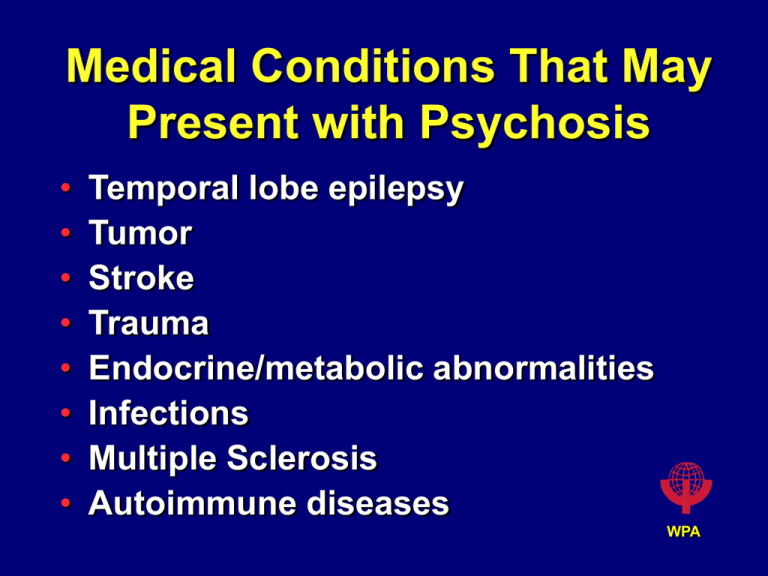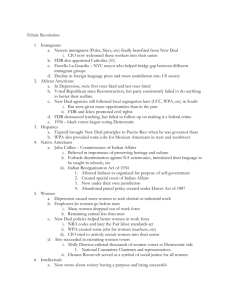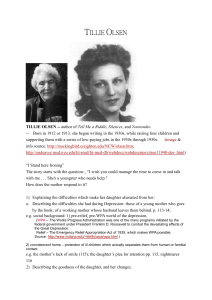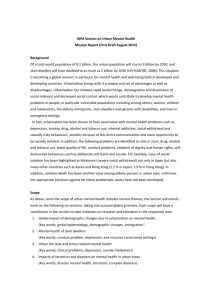teach-eng-mod1
advertisement

Medical Conditions That May Present with Psychosis • • • • • • • • Temporal lobe epilepsy Tumor Stroke Trauma Endocrine/metabolic abnormalities Infections Multiple Sclerosis Autoimmune diseases WPA Evaluating Psychosocial Function • Premorbid • Current WPA Aspects of Psychosocial Function • • • • • • • Relationship to parents Relationship to siblings Relationship to peers Sexual adjustment Educational history Work function Recreational activities and interests WPA Laboratory Workup • No standard set of laboratory tests • Test selected on basis of clinical presentation, mode of onset, and past history WPA Some Common Laboratory Tests • • • • • • • • • Complete blood count Urinalysis Endocrine tests Liver function tests Electroencephalogram Computerized Tomography Magnetic Resonance Imaging Neuropsychological tests Projective tests WPA Cross Cultural Issues: Similarities Across Cultures • Schizophrenia is found throughout the world • Some symptoms tend to be identical worldwide Negative symptoms Thought Disorder Cognitive Impairment WPA Differences Across Cultures • Content of psychotic symptoms • Outcome • Frequency of acute psychotic episodes WPA Reasons for Frequency of Acute Psychosis • Infections • Nutrition • Delays in provision of medical care WPA Social Outcome in First Episode Schizophrenia: Nagasaki Follow-up after 2 years 1981-1982 Follow-up after 5 years 19841985 Follow-up after 10 years 19891990 64 65 58 Good Outcome 34.4 44.6 36.2 Poor Outcome 24.4 35.4 35.5 Hospitalized 31.3 20.0 29.3 With good outcome 39.1 50.8 44.8 With poor outcome 60.9 49.2 55.2 Number of cases at follow-up DAS overall evaluation (includes cases in the hospital) WPA Poor Outcome: Predictors • • • • • • • Prominent negative symptoms Early age of onset Insidious onset Poor premorbid adjustment Low educational achievement Low parental social class Male gender WPA Comparison of Course in Developed and Developing Countries Pattern of Course * 1 2 3 4 5 6 7 8 9 Developed Countries (n-604) 15.7 17.4 6.2 5.3 14.7 12.1 17.1 2.3 -- Developing Countries (n-474) 37.1 11.6 6.5 2.3 19.0 10.6 11.2 1.1 0.6 * 1. Single psychotic episode, complete remission 2. Single psychotic episode, incomplete remission 3. Single psychotic episode, non-psychotic episodes complete remission 4. Single psychotic episode, non-psychotic episodes incomplete remission 5. 2+ psychotic episodes, complete remission 6. 2+ psychotic episodes, incomplete remission 7. Continuous psychotic illness, no remission 8. Continuous non-psychotic illness 9. Not known WPA Reasons for Better Outcome in Developing Countries • Better social support from extended families • Less social pressure to achieve occupationally • Lower stress in rural environments and small villages • Less stigma toward mental illness WPA







